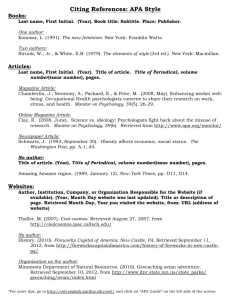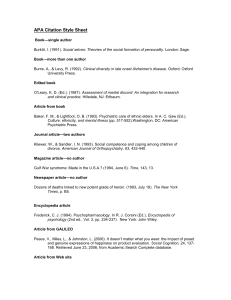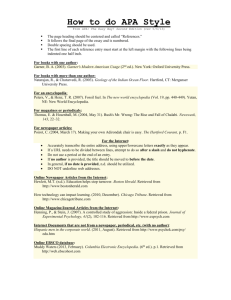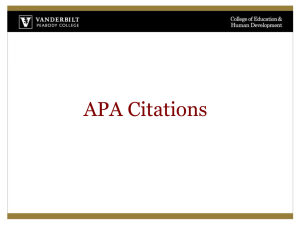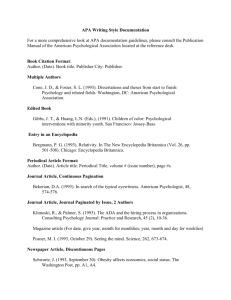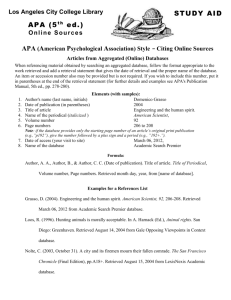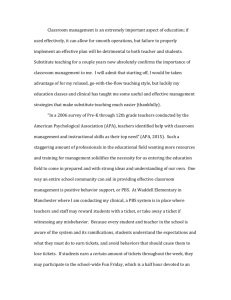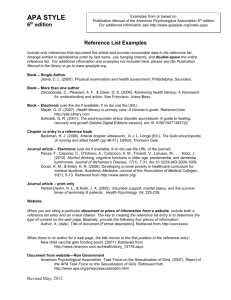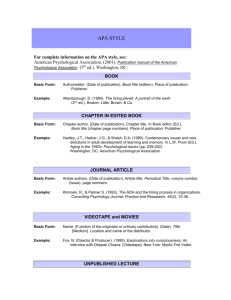APA Paper Template - Davenport University
advertisement
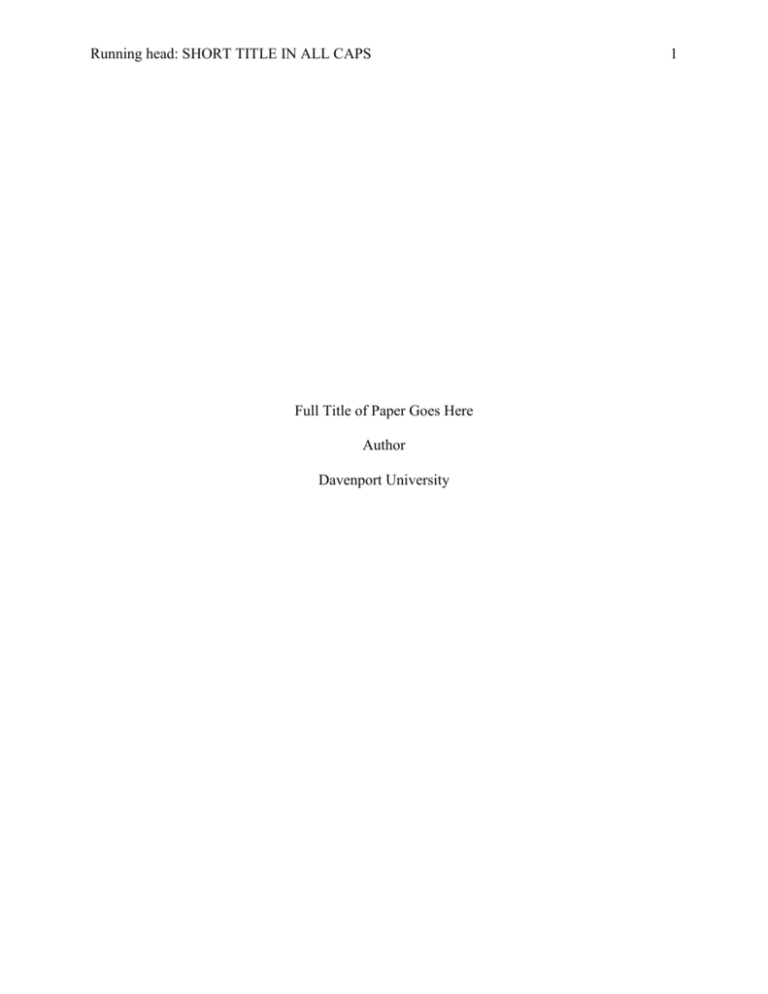
Running head: SHORT TITLE IN ALL CAPS Full Title of Paper Goes Here Author Davenport University 1 SHORT TITLE IN ALL CAPS 2 Abstract The abstract is a summary of your paper and should highlight the most important points. It should begin at the left-hand margin with no paragraph indentation. SHORT TITLE IN ALL CAPS 3 Full Title of Paper Exactly As It Appears on Title Page Your paper should start with an introduction. Use the active voice rather than the passive voice in your writing. This paper is set up in the paper format selected by Davenport University, the APA (American Psychological Association) 6th edition style, so you can erase the text and put in your own text. Your paper should be typed, double-spaced on standard-sized paper (8.5" x 11") with 1" margins on all sides. Use a clear font that is highly readable; APA recommends using 12 pt. Times New Roman font. Paragraphs should be indented 5-7 spaces. Include a page header (also known as the "running head") at the top left of every page. The running head is a shortened version of your paper's title and cannot exceed 50 characters including spacing and punctuation. It is identified and labeled “Running head” on the title page only. Page numbers should be included on each page (including the title page) by themselves at the top right hand corner of the page. This template is bare bones. For more information consult the APA Style website at http://www.apastyle.org/index.aspx. SHORT TITLE IN ALL CAPS 4 References Bell, T., & Phillips, T. (2008, May 6). A solar flare. Science @ NASA Podcast. Podcast retrieved from http://science.nasa.gov/podcast.htm Bernstein, M. (2002). 10 tips on writing the living Web. A list apart: For people who make websites, 149. Retrieved from http://www.alistapart.com/articles/writeliving Brownlie, D. (2007). Toward effective poster presentations: An annotated bibliography. European Journal of Marketing, 41, 1245-1283. doi:10.1108/03090560710821161 Cummings, J. N., Butler, B., & Kraut, R. (2002). The quality of online social relationships. Communications of the ACM, 45(7), 103-108. Feminism. (n.d.). In Encyclopædia Britannica online. Retrieved from http://www.britannica.com/EBchecked/topic/724633/feminism Hu, Y., Wood, J. F., Smith, V., & Westbrook, N. (2004). Friendships through IM: Examining the relationship between instant messaging and intimacy. Journal of Computer-Mediated Communication, 10(1), 38-48. Parker-Pope, T. (2008, May 6). Psychiatry handbook linked to drug industry. The New York Times. Retrieved from http://www.nytimes.com Roberts, K. F. (1998). Federal regulations of chemicals in the environment [PowerPoint slides]. Retrieved from http://siri.uvm.edu/ppt/40hrenv/index.html Tidwell, L. C., & Walther, J. B. (2002). Computer-mediated communication effects on disclosure, impressions, and interpersonal evaluations: Getting to know one another a bit at a time. Human Communication Research, 28(3), 317-348.

